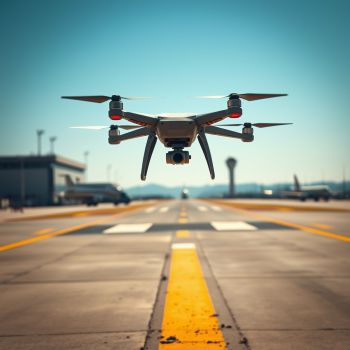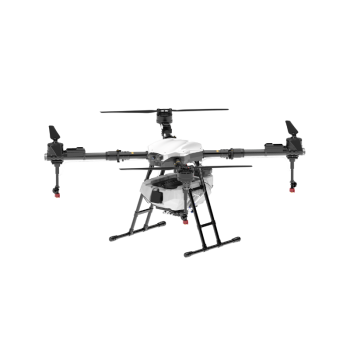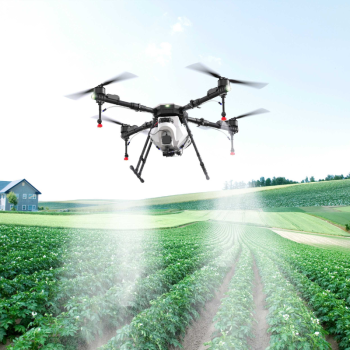Comparison between Agricultural drones and ground agricultural machinery
Comparative Analysis: Plant Protection Drones vs. Ground-Based Machinery in Agricultural Applications
The adoption of advanced technologies in agriculture has intensified the debate between aerial and ground-based methods for crop protection. Plant protection drones and traditional ground machinery each offer distinct advantages and limitations, shaping their suitability for different farming scenarios. By examining factors such as efficiency, precision, terrain adaptability, and environmental impact, farmers can make informed decisions about which tool aligns best with their operational needs. Below, we explore how these two approaches compare across key agricultural parameters.
Operational Efficiency and Time Management
Plant protection drones are renowned for their ability to cover large areas rapidly, particularly in scenarios where time is critical. Equipped with autonomous navigation systems, drones can operate continuously across fields without the need for manual repositioning, reducing labor costs and minimizing downtime. For instance, a drone can treat a 50-acre field in a fraction of the time required by a tractor-mounted sprayer, which must navigate rows and turn at field edges. This speed is especially valuable during pest outbreaks or when applying treatments ahead of adverse weather conditions, such as rain, which could wash away chemicals before absorption.
Ground-based machinery, while slower, excels in scenarios requiring sustained, heavy-duty application. Tractors and self-propelled sprayers can carry larger tanks, reducing the frequency of refills during extended operations. This makes them ideal for vast monoculture farms where uniform coverage is prioritized over speed. However, their reliance on pre-planned routes and manual steering can lead to inefficiencies in irregularly shaped fields or areas with obstacles like trees or utility poles. In such cases, drones offer superior flexibility by adjusting flight paths in real time to avoid obstacles and optimize coverage.
The integration of AI and machine learning further enhances the efficiency of plant protection drones. These systems analyze crop health data collected during flights to prioritize treatment zones, ensuring that resources are allocated where they are most needed. Ground machinery, while increasingly equipped with GPS guidance, often lacks this level of dynamic adaptability, relying instead on static prescriptions generated before the operation begins.
Precision and Treatment Accuracy
Precision agriculture demands tools capable of delivering treatments with minimal waste and maximum effectiveness. Plant protection drones excel in this regard by leveraging advanced sensors and imaging technologies to map fields at high resolution. Multispectral or thermal cameras can detect subtle variations in plant health, allowing drones to apply pesticides, fertilizers, or growth regulators only to affected areas. This targeted approach reduces chemical runoff, lowers input costs, and minimizes the risk of developing resistant pest populations due to overuse.
Ground-based machinery, while capable of precision application through technologies like variable-rate sprayers, often struggles to match the granularity of aerial systems. Tractors moving at consistent speeds may inadvertently over- or under-treat certain zones, especially in fields with uneven terrain or variable crop density. Additionally, the physical contact between ground equipment and soil can compact the earth, disrupting root systems and reducing water infiltration—a side effect absent in drone operations.
However, ground machinery holds an advantage in scenarios requiring deep soil penetration or heavy-duty tasks like tillage-based weed control. Drones are limited to surface-level treatments, making them unsuitable for applications that demand physical interaction with the soil. For example, managing perennial weeds in orchards may require a combination of aerial herbicide application and ground-based cultivation, highlighting the complementary roles of both technologies.
Terrain Adaptability and Accessibility
The ability to operate in diverse terrains is a critical factor in agricultural productivity, particularly in regions with hilly landscapes, wetlands, or fragmented fields. Plant protection drones are inherently adaptable, capable of flying over obstacles and accessing remote or steep areas that are difficult for ground machinery to reach. This makes them invaluable for vineyards, olive groves, or coffee plantations, where traditional equipment would risk damaging crops or becoming stuck on slopes.
Ground-based machinery, while improving in versatility with the development of tracked or articulated models, remains constrained by physical limitations. Heavy tractors can cause soil erosion on slopes, while wet or muddy conditions may render them inoperable altogether. In contrast, drones are unaffected by ground moisture or terrain slope, ensuring consistent treatment quality regardless of environmental challenges. Their compact size also allows them to navigate narrow field margins or between rows of high-value crops without causing damage.
Despite these advantages, drones face limitations in windy conditions, where strong gusts can disrupt flight stability and spray patterns. Ground machinery, anchored to the earth, is less susceptible to wind interference, making it a more reliable choice in open, exposed regions prone to high winds. Additionally, the need for clear takeoff and landing zones can restrict drone operations in densely vegetated or cluttered areas, whereas ground equipment can operate directly from field edges or tracks.
Environmental Impact and Sustainability
Sustainability is a growing priority in agriculture, driving demand for tools that minimize ecological harm while maintaining productivity. Plant protection drones contribute to this goal by reducing chemical usage through precision application, thereby lowering the risk of water contamination and non-target species exposure. Their electric or hybrid powertrains also produce fewer emissions compared to diesel-powered ground machinery, aligning with global efforts to decarbonize farming practices.
Ground-based machinery, however, offers sustainability benefits in terms of energy efficiency for large-scale operations. Modern tractors equipped with auto-shutdown features and fuel-efficient engines can minimize fuel consumption during extended tasks, reducing their carbon footprint per acre treated. Additionally, ground equipment can integrate cover crop seeders or soil aerators, promoting long-term soil health in ways that drones cannot replicate.
The choice between aerial and ground methods also depends on the specific environmental challenges of a region. In areas with fragile ecosystems, such as wetlands or protected habitats, drones provide a non-intrusive alternative to heavy machinery that could disturb wildlife or degrade habitats. Conversely, in arid regions where water conservation is critical, ground-based drip irrigation systems integrated with precision sprayers may offer superior resource efficiency compared to aerial methods.
As agriculture continues to evolve, the coexistence of plant protection drones and ground-based machinery will likely define the future of crop protection. Each technology addresses unique challenges, from rapid response to pest outbreaks to sustainable soil management, ensuring that farmers have access to a diverse toolkit tailored to their specific needs. By leveraging the strengths of both approaches, the industry can achieve higher yields, lower costs, and reduced environmental impact—a balance essential for feeding a growing global population.




